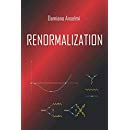Perturbative unitarity
We study gauge theories and quantum gravity in a finite interval of time $ \tau $, on a compact space manifold $\Omega $. The initial, final and boundary conditions are formulated in gauge invariant and general covariant ways by means of purely virtual extensions of the theories, which allow us to “trivialize” the local symmetries and switch to invariant fields (the invariant metric tensor, invariant quark and gluon fields, etc.). The evolution operator $U(t_{\text{f}},t_{\text{i}})$ is worked out diagrammatically for arbitrary initial and final states, as well as boundary conditions on $\partial \Omega $, and shown to be well defined and unitary for arbitrary $\tau =t_{\text{f}}-t_{\text{i}}<\infty $. We illustrate the basic properties in Yang-Mills theory on the cylinder.
Phys. Rev. D 109 (2024) 025003 | DOI: 10.1103/PhysRevD.109.025003
We study the free and dressed propagators of physical and purely virtual particles in a finite interval of time $τ$ and on a compact space manifold $Ω$, using coherent states. In the free-field limit, the propagators are described by the entire function $(e^{z}-1-z)/z^{2}$, whose shape on the real axis is similar to the one of a Breit-Wigner function, with an effective width around $1/τ$. The real part is positive, in agreement with unitarity, and remains so after including the radiative corrections, which shift the function into the physical half plane. We investigate the effects of the restriction to finite $τ$ on the problem of unstable particles vs resonances, and show that the muon observation emerges from the right physical process, differently from what happens at $τ=\infty $. We also study the case of purely virtual particles, and show that, if $τ$ is small enough, there exists a situation where the geometric series of the self-energies is always convergent. The plots of the dressed propagators show testable differences: while physical particles are characterized by the usual, single peak, purely virtual particles are characterized by twin peaks.
J. High Energ. Phys. 07 (2023) 99 | DOI: 10.1007/JHEP07(2023)099
We reconsider the Lee-Wick (LW) models and compare their properties to the properties of the models that contain purely virtual particles. We argue against the LW premise that unstable particles can be removed from the sets of incoming and outgoing states in scattering processes. The removal leads to a non-Hermitian classical limit, besides clashing with the observation of the muon. If, on the other hand, all the states are included, the LW models have a Hamiltonian unbounded from below or negative norms. Purely virtual particles, on the contrary, lead to a Hermitian classical limit and are absent from the sets of incoming and outgoing states without implications on the observation of long-lived unstable particles. We give a vademecum to summarize the properties of most options to treat abnormal particles. We study a method to remove the LW ghosts only partially, by saving the physical particles they contain. Specifically, we replace a LW ghost with a certain superposition of a purely virtual particle and an ordinary particle, and drop only the former from the sets of the external states. The trick can be used to make the Pauli-Villars fields consistent and observable, without sending their masses to infinity, or to build a finite QED, by tweaking the original Lee-Wick construction. However, it has issues with general covariance, so it cannot be applied as is to quantum gravity, where a manifestly covariant decomposition requires the introduction of a massive spin-2 multiplet.
Phys. Rev. D 105 (2022) 125017 | DOI: 10.1103/PhysRevD.105.125017
We study the resummation of self-energy diagrams into dressed propagators in the case of purely virtual particles and compare the results with those obtained for physical particles and ghosts. The three geometric series differ by infinitely many contact terms, which do not admit well-defined sums. The peak region, which is outside the convergence domain, can only be reached in the case of physical particles, thanks to analyticity. In the other cases, nonperturbative effects become important. To clarify the matter, we introduce the energy resolution $\Delta E$ around the peak and argue that a “peak uncertainty” $\Delta E\gtrsim \Delta E_{\text{min}}\simeq \Gamma _{\text{f}}/2$ around energies $E\simeq m_{\text{f}}$ expresses the impossibility to approach the fakeon too closely, $m_{\text{f}}$ being the fakeon mass and $\Gamma _{\text{f}}$ being the fakeon width. The introduction of $\Delta E$ is also crucial to explain the observation of unstable long-lived particles, like the muon. Indeed, by the common energy-time uncertainty relation, such particles are also affected by ill-defined sums at $\Delta E=0$, whenever we separate their observation from the observation of their decay products. We study the regime of large $\Gamma _{\text{f}}$, which applies to collider physics (and situations like the one of the $Z$ boson), and the regime of small $\Gamma _{\text{f}}$, which applies to quantum gravity (and situations like the one of the muon).
J. High Energy Phys. 06 (2022) 058 | DOI: 10.1007/JHEP06(2022)058
We prove spectral optical identities in quantum field theories of physical particles (defined by the Feynman $i\epsilon $ prescription) and purely virtual particles (defined by the fakeon prescription). The identities are derived by means of purely algebraic operations and hold for every (multi)threshold separately and for arbitrary frequencies. Their major significance is that they offer a deeper understanding on the problem of unitarity in quantum field theory. In particular, they apply to “skeleton” diagrams, before integrating on the space components of the loop momenta and the phase spaces. In turn, the skeleton diagrams obey a spectral optical theorem, which gives the usual optical theorem for amplitudes, once the integrals on the space components of the loop momenta and the phase spaces are restored. The fakeon
prescription/projection is implemented by dropping the thresholds that involve fakeon frequencies. We give examples at one loop (bubble, triangle, box, pentagon and hexagon), two loops (triangle with “diagonal”, box with diagonal) and arbitrarily many loops. We also derive formulas for the loop integrals with fakeons and relate them to the known formulas for the loop integrals with physical particles.
J. High Energy Phys. 11 (2021) 030 | DOI: https://doi.org/10.1007/JHEP11(2021)030
Talk given by Marco Piva at the conference “Avenues of quantum field theory in curved spacetime“, Modena, Sept 9th, 2019
We elaborate on the idea of fake particle and study its physical consequences. When a theory contains fakeons, the true classical limit is determined by the quantization and a subsequent process of “classicization”. One of the major predictions due to the fake particles is the violation of microcausality, which survives the classical limit. This fact gives hope to detect the violation experimentally. A fakeon of spin 2, together with a scalar field, is able to make quantum gravity renormalizable while preserving unitarity. We claim that the theory of quantum gravity emerging from this construction is the right one. By means of the classicization, we work out the corrections to the field equations of general relativity. We show that the finalized equations have, in simple terms, the form $\langle F\rangle =ma$, where $\langle F\rangle $ is an average that includes a little bit of “future”.
Class. and Quantum Grav. 36 (2019) 065010 | DOI: 10.1088/1361-6382/ab04c8
We investigate the properties of fakeons in quantum gravity at one loop. The theory is described by a graviton multiplet, which contains the fluctuation $h_{\mu \nu }$ of the metric, a massive scalar $\phi $ and the spin-2 fakeon $\chi _{\mu \nu }$. The fields $\phi $ and $\chi _{\mu \nu }$ are introduced explicitly at the level of the Lagrangian by means of standard procedures. We consider two options, where $\phi $ is quantized as a physical particle or a fakeon, and compute the absorptive part of the self-energy of the graviton multiplet. The width of $\chi _{\mu \nu }$, which is negative, shows that the theory predicts the violation of causality at energies larger than the fakeon mass. We address this issue and compare the results with those of the Stelle theory, where $\chi _{\mu \nu }$ is a ghost instead of a fakeon.
J. High Energy Phys. 11 (2018) 21 | DOI: 10.1007/JHEP11(2018)021
A theory of quantum gravity has been recently proposed by means of a novel quantization prescription, which is able to turn the poles of the free propagators that are due to the higher derivatives into fakeons. The classical Lagrangian contains the cosmological term, the Hilbert term, $
\sqrt{-g}R_{\mu \nu }R^{\mu \nu }$ and $\sqrt{-g}R^{2}$. In this paper, we compute the one-loop renormalization of the theory and the absorptive part of the graviton self energy. The results illustrate the mechanism that makes renormalizability compatible with unitarity. The fakeons disentangle the real part of the self energy from the imaginary part. The former obeys a renormalizable power counting, while the latter obeys the nonrenormalizable power counting of the low energy expansion and is consistent with unitarity in the limit of vanishing cosmological constant. The value of the absorptive part is related to the central charge $c$ of the matter fields coupled to gravity.
J. High Energ. Phys. 05 (2018) 27 | DOI: 10.1007/JHEP05(2018)027
The “fakeon” is a fake degree of freedom, i.e. a degree of freedom that does not belong to the physical spectrum, but propagates inside the Feynman diagrams. Fakeons can be used to make higher-derivative theories unitary. Moreover, they help us clarify how the Lee-Wick models work. In this paper we study the fakeon models, that is to say the theories that contain fake and physical degrees of freedom. We formulate them by (nonanalytically) Wick rotating their Euclidean versions. We investigate the properties of arbitrary Feynman diagrams and, among other things, prove that the fakeon models are perturbatively unitary to all orders. If standard power counting constraints are fulfilled, the models are also renormalizable. The S matrix is regionwise analytic. The amplitudes can be continued from the Euclidean region to the other regions by means of an unambiguous, but nonanalytic, operation, called average continuation. We compute the average continuation of typical amplitudes in four, three and two dimensions and show that its predictions agree with those of the nonanalytic Wick rotation. By reconciling renormalizability and unitarity in higher-derivative theories, the fakeon models are good candidates to explain quantum gravity.
J. High Energy Phys. 02 (2018) 141 | DOI: 10.1007/JHEP02(2018)141

 Quantum Gravity
Quantum Gravity 


